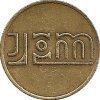Leaderboard
-
[[Template core/front/popular/memberRow is throwing an error. This theme may be out of date. Run the support tool in the AdminCP to restore the default theme.]]
[[Template core/front/popular/memberRow is throwing an error. This theme may be out of date. Run the support tool in the AdminCP to restore the default theme.]]
Popular Content
Showing content with the highest reputation on 08/30/25 in all areas
-
David Mead came to join me in CS and together we repaired hundreds of SRU circuit boards and those damned Varelco(?) plugs that kept on breaking when you unplugged the board from the reel unit, what a design flaw that was. He had an absolute photographic memory and would remember details from older machines in seconds we had no need to have record kept, although he did as I remember and kept copious volumes of details. I met him in a pub a few months (years?) ago and he is still in the industry and is an engineer for one of the big companies, forgive me I know not which one. Tony Braggins went from development to HR, strange step but there you go. He spent years in that role before retiring and as far as I know became a trustee for a Nature Park. The R+D team changed massively over the years and as I have explained previously the 'cabinet populating' side of things all went a bit pear shaped prior to the introduction of the SWP's, so that will date it for 'you that know' a you may have read I was asked to take it over when on of the w@n7ers left, or should that be pushed. The software department obviously grew from the introduction of the SRU and although we started with two or three developers, eventually it went on to number at least a dozen or more as I recall. I wasn't too involved with the software team until I took over the PM role for the SWP's and then I had at least three working for/with me under the 'matrix management' project which was novel to say the least. I do remember a game we played in the software department which involved taking an eprom and placing it in the end of the Eprom packaging tube and flicking it upwards into the ceiling tiles where the legs would hopefully keep it there embedded in the fabric, of the tile. Cheers2 points
-
I saw someone trying to track down some ROMs the other week over on Desert Island Fruits, so I've mirrored @Geddy's big fruit machine ROM collection to the Internet Archive. I can periodically upload a fresh copy to overwrite the old one... since we've got the publicly accessible Community Drive (see Dif for more info on this project), this seemed like a good companion resource Link is here: https://tinyurl.com/3jhzbueb1 point
-
Hi sulzerned, I never try to work with what I don't enjoy so work is not a task but a set of targets. At least that's what I try to achieve. The contemporaries that have retired I look at and see the age 'taking' them and it holds no attraction. I am sooo lucky to have genes that allow me to lead an active, non medicated, life and I will continue as long as I remain 'relevant'. Always ready for questions on JPM if I can help. Cheers.1 point
-
Continuing my recollections ( stop me if I'm boring you ) The Ace building in Ferry Road was a fairly dilapidated old warehouse unit that had cracked brickwork but was nicely white painted with of course a large JPM sign. A huge concrete ceiling some 20 foot high in the main assembly area and no insulation to the walls in those days ensured that in the winter it was freezing. Offices and development were on the first floor accessible by a concrete stair case or for the prototype machines, a hoist and a steel floor with chains, no cage, HSE what's that?. The stores and the cabinet shop were across a large potholed access road that went no where except to the weed covered red brick wall that was the boundary of the Gas Board wall and the huge gasometers that supplied some parts of Cardiff and dwarfed the factory. Stacked on shelves behind the 6 assembly workers were the parts to be fitted to the cabinets and in front of them scraps of domestic carpeting were a protection from the cold floor in front of the assembly runners. Empty machines were brought in on sack trucks and set on plywood bases to be pushed down the floor level roller line. Graham, Tommy, Howard, Gareth B, Gareth G, Gary (common name in Wales yew see, init,) used pneumatic drills, screw drivers and nut runners to install the components necessary for the build and they all raced with their guns screaming to see who could finish their machine first. From the end of the line machines were again sack trucked into the test compound which was delineated by a low stud wall topped with a green plastic coated chicken wire, this to make sure that no one could get in unless they were trained as the earthing was protected, the machine having to be earth tested separately. My first job was to build (reel units) flashers which I found both daunting and interesting if a little repetitive but soon, chasing my own build count made me want to better the build environment. Given a colleague to work with we finished our efforts quite early in the week so rather than pass them on to the Flasher Test area, I offered to learn and was introduced to the Schematics and so we combined the build and test which just made common sense to me. Finding work to do was easy as we were getting more and more successful by the week and demarcation lines were thin. One of the tasks we could help with was producing the Schematics from the master copies. To make the large scale AO circuit diagrams or schematics that made up the only diagnostic guide sent with the machine we had a master that was made by Howard Parker drawn full scale on a transparent plastic like material. This was then placed on a special sheet of ‘blue print’ or photo sensitive paper and both were put into the rollers of a diazotype printing machine. This machine used neat ammonia as part of the 'developing' medium and the paper being photo sensitive bleached with the blinding light produced, but only where the master was blank. When blueprint paper is exposed to uv light through the machine a positive image is "burned" onto the blueprint paper from the original. After this occurs, the paper is then exposed to ammonia gas which fixes the lines or the print which turn blue. The problem was that the Ammonia had to be fresh and transferring it form a bottle to the machine ended in the room filling with ammonia fumes, the process itself producing even more fumes. Again HSE? I seemed to understand the schematics quite readily so I was keen to learn how to test the rest of the machine and started hanging around the test area where the relay covered control units with their various rotary control timers were being tested or perhaps exercised is a more fitting description. This was done on huge test rigs covered in lamps and switches which were in reality simply a machine without the cabinet. Helping with this, and testing the reel units introduced me of course to the concept of fault finding using the schematics which stood me in good stead as time went by. Regards, Frank Bird .......... To be continued ..........1 point


